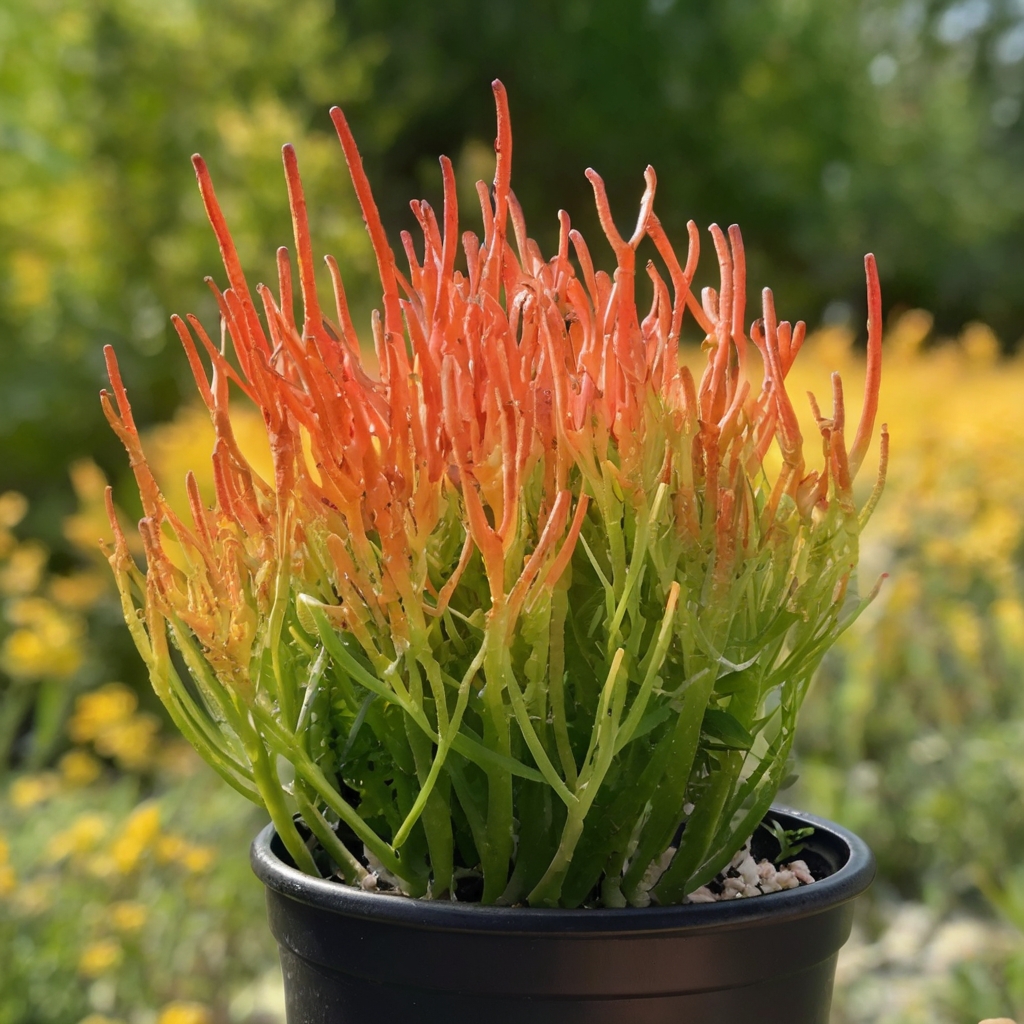
The Firestick plant, scientifically known as Euphorbia tirucalli, is a striking and resilient succulent renowned for its vivid, pencil-like branches. Despite its hardiness, this unique plant can fall prey to various issues, from pest infestations and diseases to environmental stress. An investigative dive into these problems can illuminate how to keep your Firestick plant thriving.
Unmasking Pests: The Silent Invaders
Even the seemingly invincible Firestick plant is not immune to pests. These intruders can stealthily compromise the health of your succulent. Here’s a detailed look at the main culprits:
Mealybugs: The Sugar-Coated Menace
Mealybugs are small, white, cotton-like pests that attach themselves to the plant, sucking its sap. Their presence is often indicated by a sticky substance known as honeydew, which can attract ants and promote sooty mold.
Investigation Tip: Inspect the undersides of branches and around leaf joints regularly. Mealybugs often hide in these crevices.
Action Plan:
1. Isolation: If you spot mealybugs, isolate the affected plant to prevent spreading.
2. Manual Removal: Use a cotton swab dipped in rubbing alcohol to dab on the pests, which dissolves their protective coating and kills them.
3. Insecticidal Soap: For severe infestations, apply insecticidal soap or neem oil, following the manufacturer’s instructions.
Spider Mites: The Web Weavers
Spider mites are tiny, reddish-brown pests that create fine webbing around the plant. They thrive in dry conditions and can cause significant damage by sucking plant juices, leading to yellowing and weakened stems.
Investigation Tip: Check for fine webbing and tiny moving dots, especially during dry weather.
Action Plan:
1. Increase Humidity: Spider mites dislike high humidity, so misting the plant or placing a humidifier nearby can help.
2. Water Spray: A strong spray of water can dislodge spider mites from the plant.
3. Miticide: If the infestation persists, use a miticide, ensuring it’s safe for succulents.
Disease Diagnosis: Identifying and Treating Common Ailments
While generally hardy, the Firestick plant can succumb to diseases, especially if weakened by environmental stress or pest infestations.
Root Rot: The Silent Killer
Root rot is typically caused by overwatering or poor drainage, leading to the roots’ decay. The plant may display yellowing, wilting, and a foul smell from the roots.
Investigation Tip: Check the soil moisture regularly and ensure the pot has adequate drainage. If the plant appears unhealthy, gently remove it from the pot to inspect the roots.
Action Plan:
1. Immediate Action: Remove the plant from the soil and trim away any affected roots.
2. Drying Out: Allow the plant and roots to dry out completely before repotting in fresh, well-draining soil.
3. Watering Routine: Adjust your watering schedule to ensure the soil dries out between waterings.
Powdery Mildew: The Fungal Intruder
Powdery mildew appears as a white, powdery substance on the plant’s surfaces. It thrives in humid conditions and can spread rapidly if not addressed.
Investigation Tip: Look for white patches on the stems and leaves, especially in shaded, damp areas.
Action Plan:
1. Improve Air Circulation: Ensure the plant is in a well-ventilated area.
2. Fungicidal Treatment: Apply a fungicide or a homemade solution of baking soda and water to affected areas.
3. Pruning: Remove heavily infected parts to prevent spread.
Environmental Stress: The Silent Stressor
Environmental factors play a crucial role in the health of your Firestick plant. Improper care can lead to stress, making the plant more susceptible to pests and diseases.
Light Stress: The Balance of Sunlight
Firestick plants need plenty of sunlight to maintain their vibrant color and robust health. However, too much direct sunlight can cause sunburn, while too little can lead to etiolation, where the plant becomes leggy and pale.
Investigation Tip: Observe the color and growth pattern of the plant. Scorched, brown patches indicate sunburn, while elongated, pale growth suggests insufficient light.
Action Plan:
1. Optimal Placement: Place the plant in a location with bright, indirect sunlight.
2. Gradual Adjustment: If moving the plant to a sunnier spot, do so gradually to acclimate it and prevent sunburn.
3. Artificial Light: Consider supplemental grow lights if natural light is inadequate.
Water Stress: The Hydration Equation
Both overwatering and underwatering can cause significant stress to Firestick plants. Symptoms of water stress include yellowing, drooping, and root problems.
Investigation Tip: Monitor the soil moisture and the plant’s response to watering. Soggy soil indicates overwatering, while extremely dry soil signals underwatering.
Action Plan:
1. Watering Schedule: Water only when the top inch of soil is dry to the touch.
2. Soil Mix: Use a well-draining cactus or succulent mix to prevent water retention.
3. Drainage: Ensure pots have drainage holes to allow excess water to escape.
Temperature Extremes: The Thermal Threat
Firestick plants prefer warm temperatures and can suffer in extreme cold or heat. Frost can damage the plant, while excessive heat can cause dehydration and stress.
Investigation Tip: Check the plant’s location for temperature fluctuations. Wilting or color changes can indicate temperature stress.
Action Plan:
1. Seasonal Protection: Move the plant indoors or provide frost protection during cold weather.
2. Heat Management: Ensure the plant is not exposed to intense heat without adequate hydration.
3. Consistent Environment: Aim to keep the plant in a stable, warm environment.
